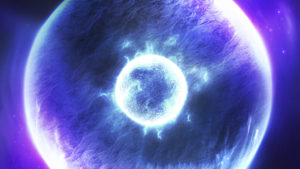


Anthony Peratt
Anthony L. Peratt is an American physicist whose most notable achievements and work have been in plasma physics, nuclear fusion and the monitoring of nuclear weapons.
Education[edit]
He received a Ph.D in electrical engineering / plasma physics in 1971 from the University of Southern California (USC), Los Angeles. He has awarded a Master of Science in electrical engineering in 1967, also from USC.[1]
Scientific career[edit]
He worked at the Lawrence Livermore National Laboratory between 1972 and 1979, during which time he held the position of a Guest Physicist at the Max Planck Institute for Physics and Astrophysics at Garching, near Munich, from 1975 to 1977. From 1981 to the present he has worked at the Los Alamos National Laboratory, serving in the Applied Theoretical Physics Division. He had a sabbatical in 1985 as Guest Scientist at the Alfvén Laboratory of the Royal Institute of Technology in Stockholm. He led the N-Tunnel Diagnostics Program for Los Alamos at the Nevada Test Site nuclear testing ground from 1991 to 1993, when he became leader of the American inspection team for the Russian Arctic nuclear test site at Novaya Zemlya. Dr. Peratt was seconded as a Scientific Advisor to the United States Department of Energy (USDOE) from 1995 to 1999. Whilst working for the USDOE he was the Acting Director, National Security, Nuclear Non Proliferation Directorate in 1998.[1]
Peratt is currently working on possible archaeological evidence for major space plasma events in prehistory.
Research[edit]
He has worked on high-energy-density plasmas and related phenomena, intense particle beams and intense microwave sources, explosively-driven pulsed-power generators, the z-pinch effect, and nuclear fusion target designs.[1]
He is an influential proponent of plasma cosmology, a non-standard cosmology proposed as an alternative to the Big Bang and rejected by mainstream cosmologists. He wrote a book on the subject,[2] was guest editor for the space plasma special editions at the IEEE journal Transactions on Plasma Science devoted primarily to plasma cosmology,[3] and wrote some papers on the subject.[4][5]
He has researched petroglyphs, some of which he claims are records made in prehistory about significant auroral events caused by intense solar storms.[6]
Honors[edit]
He has been awarded:[1]
- The United States Department of Energy Distinguished Performance Award twice, in 1987 and 1999.
- The IEEE Distinguished Lecturer Award in 1993.
- The Norwegian Academy of Science and Letters Kristian Birkeland Lecturer in 1995.
- IEEE Fellowship in 1999.[7]
- The Los Alamos National Laboratory Director’s 30 Years, University of California Service Award in 2006.
He is a member of the American Physical Society, and the American Astronomical Society.
External links[edit]
Peratt's name is listed among the scientists signing "An Open Letter to the Scientific Community" (published in New Scientist in May 2004) that critiques the "growing number of hypothetical entities in the big bang theory". The letter also states that plasma cosmology, the steady-state model and other alternative approaches can also explain the basic phenomena of the cosmos.
References[edit]
- ^ Jump up to:a b c d "Biography of Anthony L. Peratt". IEEE Nuclear and Plasma Sciences Society News: 38. March 2006. Addendum to Class Of 2009: The Newly Elected Members Of AdCom Archived June 29, 2011, at the Wayback Machine. in the same issue of the newsletter.
- Jump up^ Peratt, Anthony (1992). Physics of the Plasma Universe. Springer. ISBN 0-387-97575-6.
- Jump up^ "SPECIAL ISSUES". Retrieved 15 August 2012.
- Jump up^ A. Peratt (1986). "Evolution of the plasma universe. I - Double radio galaxies, quasars, and extragalactic jets" (PDF). IEEE Trans. on Plasma Science. PS-14: 639–660. ISSN 0093-3813.
- Jump up^ A. Peratt (1986). "Evolution of the Plasma Universe: II. The Formation of Systems of Galaxies" (PDF). IEEE Trans. on Plasma Science. PS-14: 763–778. ISSN 0093-3813.
- Jump up^ Anthony L. Peratt (December 2003). "Characteristics for the Occurrence of a High-Current, Z-Pinch Aurora as Recorded in Antiquity". Ieee Transactions on Plasma Science. 31 (6): 1192–1214. doi:10.1109/TPS.2003.820956.
- Jump up^ IEEE. "Fellows: P". Retrieved 16 November 2012.